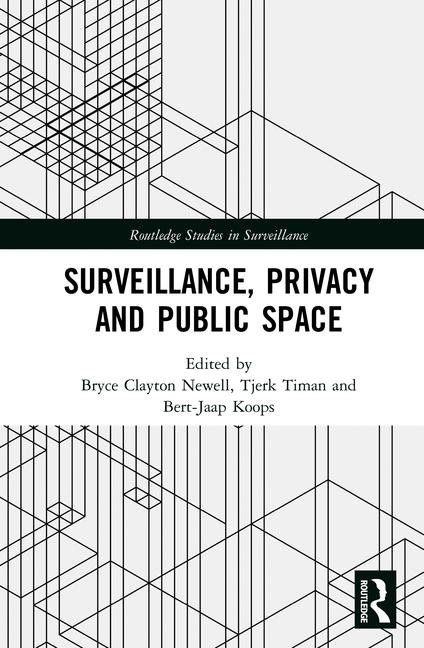Technicians may encounter a range of potentially dangerous hazards in the course of installing and servicing security systems. In addition to encountering potential electrical hazards and unsafe chemicals, technicians also may need to use equipment such as lifts that could be dangerous if not operated properly.
A range of regulations, primarily from the Occupational Safety and Health Administration (OSHA), are aimed at protecting workers from hazards such as these. And some states may have additional requirements, explains Les Gold, author of SDM’s column “Security & the Law,” as well as partner with Los Angeles-based law firm Mitchell Silberberg & Knupp.
Employees are responsible for their own safety; employers are responsible for providing equipment that’s safe and effective. — Roy Pollack, author of SDM's 5-Minute Tech Quiz
“Federal laws pre-empt state laws but if the state law doesn’t infringe on the federal law, states can also impose laws and they do,” Gold says.
Enforcement action against security dealers occurs infrequently and depending on specifics, may take the form of a warning letter, Gold notes. But if OSHA should opt to impose a fine on a security company, it undoubtedly will be a steep one.
“OSHA fines start at $10,000,” he observes.
The responsibility for meeting OSHA requirements falls in part on employers and in part on employees.
”Employees are responsible for their own safety; employers are responsible for providing equipment that’s safe and effective,” explains Roy Pollack, a Wellington, Fla.-based independent security consultant and the author of SDM’s “5-Minute Tech Quiz.”
Key Regulations
OSHA regulations fall into two categories — the construction industry and general industry, explains Dan Cantrell, chairman of the Electronic Security Association (ESA) Education Committee.
“Technicians working in peoples’ homes would fall in the construction category,” Cantrell says.
OSHA construction standards are voluminous and it wouldn’t be possible to cover all of them in this article. And while this article should not be viewed as a substitute for in-depth training on OSHA and other safety requirements, here are six regulations that security technicians can’t ignore.
1. Ladder Safety
“According to statistics, injuries involving ladders are the No. 1 worker’s compensation injury,” Pollack says.
Standing on the top rung of a ladder is against OSHA standards, Pollack notes.
OSHA requirements also specify that ladders must be placed one foot from the wall for every four feet of height and that the top and bottom of the ladder must be secured.
2. Electrical Safety
In the course of installing a security system, technicians may need to take the cover off of an electrical outlet or mount a thermostat. Tasks such as these pose potential hazards that may include live wires, Cantrell describes.
OSHA requires installers to take various precautions in situations such as these, including turning off the breaker to the circuit and establishing a lock out so that the circuit can’t be turned on by an unwitting individual, Cantrell says. Technicians also are required to tag potential electrical hazards to alert others that someone is working on that circuit.
3. Personal Protection Equipment
Personal protection equipment is a broad category that requires technicians to wear or use various types of gear depending on the specific conditions under which the employee is working.
Protective footwear is a good idea for all installations. As ESA’s National Training School (NTS) advises in materials for basic security technician training, technicians should never wear sneakers.
Other gear that may be required includes hard hats, safety glasses, gloves and other items.
“It is recommended that all technicians wear bump caps especially in attics or crawl spaces,” Cantrell says. “Hard hats must be worn when working in areas where there is a possible danger of head injury from impact, falling objects, flying objects, electrical shock and burns. Most construction sites require that all trades on the site be wearing hard hats.”
Protective eyewear is required “any time you’re using anything that could cause flying debris,” Cantrell explains.
“Safety glasses are really important if you’re drilling,” Pollack agrees.
Some companies require all technicians wear protective eyewear at all customer sites, Cantrell adds.
Hearing protection also may be required when technicians test loud alarm or fire system sirens, Pollack notes.
Finally, protective gloves are recommended “any time you’re working near anything where you could cut your hands,” Cantrell notes.
4. Lifts & Scaffolding
When security technicians need to install equipment at levels higher than they can easily reach, they may opt to use scaffolding or a lift. OSHA requires technicians using either of these options to be trained on the equipment before using it.
In the case of a lift, for example, “when you rent one, they give you 30 minutes or an hour of training on how to operate it,” Pollack says.
5. Hazardous Chemicals
Hazardous chemicals are not just an issue in obvious locations such as chemical plants. As Cantrell explains, “Security technicians work around a lot of chemicals that they may not think of as being chemicals, such as caulking and spackle — even sealed lead acid batteries can leak.”
Security technicians work around a lot of chemicals that they may not think of as being chemicals, such as caulking and spackle — even sealed lead acid batteries can leak.
Any technicians who work with these types of products — and that means just about everyone — should be aware of the chemicals that those products contain and should know where they can find a copy of the safety data sheet (SDS) about those chemicals, Cantrell says. The SDS contains information such as the properties of each chemical; the physical, health, and environmental health hazards; protective measures; and safety precautions for handling, storing, and transporting the chemical.
SDS documents replace material safety data sheets (MSDSs), which were used in the past for the same purpose. While the two types of sheets contain similar information, the SDS presents the information in a consistent format, which includes 16 sections.
6. Fall Protection
OSHA fall protection requirements come into consideration in a variety of situations. As noted in the ESA/NTS training materials, a few examples of fall hazards are excavations, skylights and unprotected edges of roofs.
Personal fall arrest systems are required for technicians when the technician is exposed to a fall hazard of greater than six feet, ESA/NTS notes. Fall arrest systems consist of a full-body harness, a lanyard and an anchor point and also may include a lifeline and a deceleration/grabbing device.
Personal fall arrest systems are required for technicians when the technician is exposed to a fall hazard of greater than six feet, ESA/NTS notes.
In other situations, it may be appropriate to use a fall restraint system, which acts as a sort of leash to prevent technicians from moving to an area from which they might fall. Unlike a fall arrest system, a restraint device does not support the worker at an elevated surface, as explained in ESA/NTS materials.
Other fall protection regulations focus not on what the worker wears but on creating physical barriers to prevent falls. For example, skylights located near a walking or working surface must be protected by a standard railing, skylight screen, grill work with four-inch by four-inch openings or slat-work with two-inch openings, ESA/NTS notes. Skylight screens must meet specific strength specifications.
Summary
Proper use of personal protection equipment, ladders, lifts and scaffolding are critical to keeping security technicians safe. It’s also important to follow regulations pertaining to hazardous chemicals, electrical safety, and fall protection. Security dealers should be familiar with the details of these and other OSHA and state regulations, and should keep their knowledge up-to-date through ongoing training.
OSHA 10 & OSHA 30 Training
Security dealers may run across references to OSHA 10 and OSHA 30 training in bid documents.
As Roy Pollack explains, an employee can receive the OSHA 10 designation by successfully completing 10 hours of training on OSHA regulations. The OSHA 30 designation goes to those who have successfully completed 30 hours of such training.
A range of companies provide OSHA 10 and OSHA 30 training, including online options.
“It’s up to the client to require it,” Pollack says.
Some insurance companies may require companies to have people who have obtained the OSHA 10 or OSHA 30 designation, he adds. “Or it’s just good practice,” he says.
Behind the Wheel
OSHA regulations apply to job sites. When a technician is on the road a different set of safety regulations come into play.
“In most states, a commercial vehicle falls under Department of Transportation regulations,” says Dan Cantrell of the Electronic Security Association (ESA). “You have to meet those requirements.”
State driving regulations also apply, says Roy Pollack, author of SDM’s “5-Minute Tech Quiz.”
Cantrell says it’s a good idea for companies to provide training on safe driving. Topics to cover include safe vehicle operation, distracted driving and others, he advises.
Traditionally, finding a customer location from a map was a key challenge, Cantrell notes. “Today’s technology helps with that, but on the other hand, it gives you more opportunities for driving distractions,” he says.











